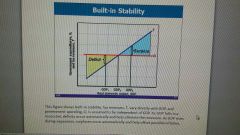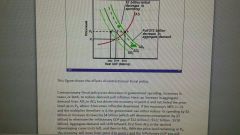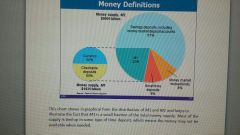![]()
![]()
![]()
Use LEFT and RIGHT arrow keys to navigate between flashcards;
Use UP and DOWN arrow keys to flip the card;
H to show hint;
A reads text to speech;
13 Cards in this Set
- Front
- Back
|
Crowding out |
May occur with government deficit spending. It may increase the interest rate and reduce private spending, which weakens or cancels the stimulus of fiscal policy |
|
|
Discretionary fiscal policy |
Deliberate manipulation of taxes and government spending by Congress to alter red domestic output and employment, control inflation, and stimulate economic growth |
|
|
Expansionary fiscal policy |
Used to combat a recession. During a recession, aggregate demand is too low, so increasing gov't spending and/or reducing taxes increases aggregate demand. This creates a deficit. |
|
|
Fiscal policy |
Automatic adjustment of gov't expenditures and tax revenues when the economy moves through the business cycle phases. |
|
|
Built-in stability |

Arises because net taxes change with GDP. Auto stability reduces instability but does not eliminate economic instability. |
|
|
Progressive/Regressive Tax |
Progressive = average tax rate rises with GDP. Regressive = average tax rate falls as GDP rises. Tax revenues will rise under progressive and proportional, but may rise, fall, or stay the same under regressive. |
|
|
Contractionary fiscal policy |

Uses decreases on gov't spending, increases in taxes, or both, to reduce demand-pull inflation. |
|
|
Functions of money |
Medium of exchange and a store of value. Unit of account in measuring GDP et al. Without money, trade would be difficult. Consistent way to compare business values. Money allows for wealth w/o the need to store actual products. |
|
|
M1 |
Currency, checkable deposits. |
|
|
Coins(currency) are token money |
The face value of the currency is unrelated to its intrinsic value. |
|
|
M2 |
M1 + near-monies. Savings deposits incl. money market deposit accounts. Small-denominated time deposits(less than $100,000). Money market mutual funds. |
|
|
Distribution of M1 & M2 |

|
|
|
Basic functions of Federal Reserve Banks |
Stability, worry more about overall economy than personal wealth. 12 banks. Independent. |

